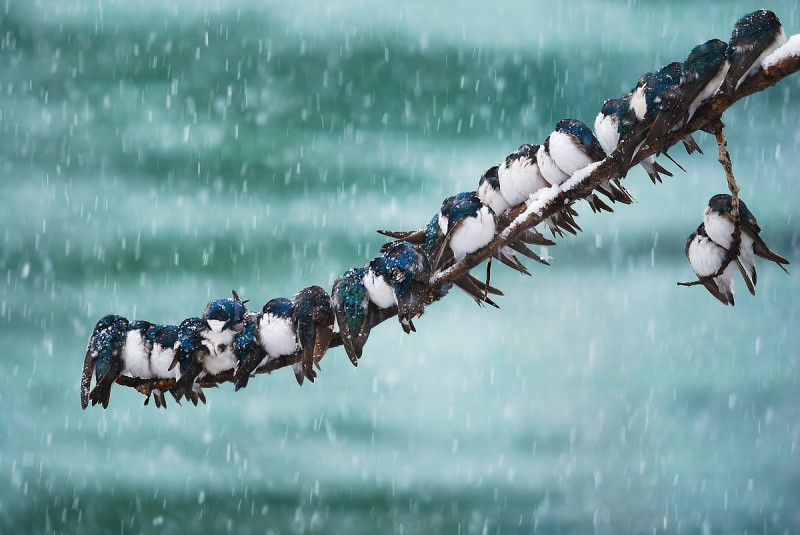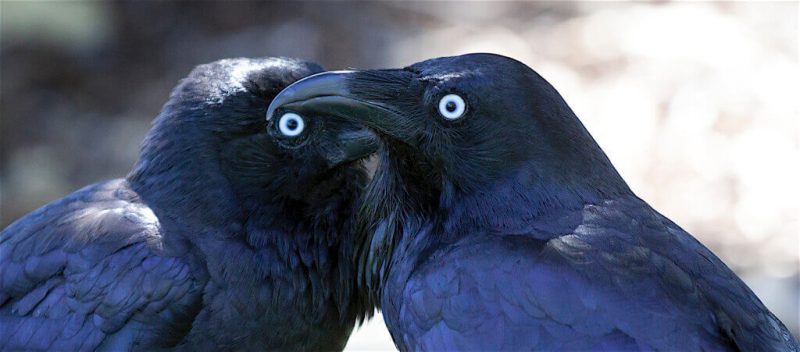Thirty or more cavity-nesting birds are known to nest in birdhouses. But they’re choosy, and no single birdhouse appeals to all. From a bird’s perspective, no matter how fancy and richly detailed it may be, a birdhouse, also called a nest or nesting box, is perceived as an opening in a tree. They’ll assess it for correct overall dimensions, the depth from the opening to the floor, the surrounding vegetation, and its safety from predators.
Birds are particular about the placement, too. You’ll see on the chart below that some birds want to nest only a few feet off the ground, while others require very high locations. The guidelines below show the optimal placement for various birds. But you may find that a bit of variance works. With some species, a “tree trunk” might successfully be replaced with a post, the siding on your house, or a birdhouse hanging from a limb. But, in general, the more exacting you are, the better your odds of attracting the birds you want.
| Species | Where to place birdhouse | Habitat |
|---|---|---|
| American Kestrel | On lone trees on woodland edges or farm buildings 10–30 ft. high. Facing south or east. | Open areas, grasslands, parks, meadows, fields, orchards |
| American Robin | Place nesting shelf under an overhang overlooking open area. Unlikely to be used if placed on a tree. | Woodlands, urban lawns with a sprinkling of shrubs and trees |
| Barn Owl | Tree trunk at edge of woods at least 8–25 ft. high. Need a nearby source of mud. | Open spaces, farmland, marshes, deserts |
| Barn Swallow | Place nesting shelf under an overhang or porch and away from doors because of messy droppings. | Farmland, open areas, cities |
| Black-capped Chickadee | On tree trunk or limb 5–15 ft. high with entrance facing away from prevailing wind. Should receive 40–60% sunlight. Can put a 1 in. layer of wood shavings in box, but never sawdust. | Woodlands, forest edges, meadows, parks, yards with mature trees |
| Blue Jay | Place nesting shelf 10–12 ft. high on tree, shed, garage, or other vertical surface overlooking an open area. | Forest edges, urban areas with large trees |
| Carolina Chickadee | On tree trunk, limb, or pole 4–15 ft. high with hole facing away from prevailing winds. Should receive 40–60% sunlight. | Woodlots, forest edges, meadows, parks, yards with mature trees and thick underbrush |
| Carolina Wren | Hang house on building or tree 3–6 ft. high. | Backyards with mature trees and tall shrubs, meadows, forest edges, suburban parks and gardens |
| Downy Woodpecker | Tree trunk in woodlands about eye level. Put a 2 in. layer of wood chips inside. | Yards, orchards, parks, woodlands |
| Eastern Bluebird | In an open area on top of a post 3–6 ft. high. Space 100–300 ft. apart. Entrance should ideally face east; else north, south, west in that order. | Open areas with little understory, orchards, parks, yards with large turf areas |
| Eastern Phoebe | Place an unroofed nesting shelf under an overhang, 7–12 ft. above ground, overlooking open area. | Woodlands, forest edges, near water |
| Eastern Screech Owl | Tree trunk at woodland edge at least 15 ft. high. Add 2–3 in. of wood shavings. | Parks, forests, forest clearings, yards with mature trees |
| Flycatcher spp. | Tree or post 6–24 ft. above the ground. | Woodland edge with unobstructed flight path |
| Hairy Woodpecker | Tree trunk at woodland edge 12 ft. or higher. Put a 2 in. layer of wood chips inside. | Yards, orchards, parks, woodlands |
| House Finch | On tree trunk or post 5–6 ft. high. Anywhere in the yard, preferably in the middle. | Open spaces, lawns, conifer forests, deserts, grasslands |
| Mountain Bluebird | In an open area on a post or tree 4–6 ft. high. Entrance should ideally face east; else north, south, west, in that order. | Open field or lawn, orchards, forest edges |
| Mourning Dove | Place shelf 7–14 ft. high on the side of a shed or garage overlooking open space. | Widespread except thick forests and swamps |
| Northern Flicker | Tree trunk or pole in open area, 6–12 ft. high, with entrance facing south or east. Fill to top with wood chips or shavings. | Woodlands, clearings, forest edges, orchards, fields, meadows, city parks |
| Prothonotary Warbler | Tree trunk or post 4–12 ft. above or near water. | Ponds, marshes, swamps or waterways bordered by woods |
| Purple Martin | Mount 10–15 ft. high in open area at least 40 ft. from obstructions. Hang several in a group or use “apartment” style house painted white. | Large open areas, meadows, fields, farmland, ponds, lakes, rivers |
| Red-bellied Woodpecker | On a tree at edge of woods 10–20 ft. high. Layer 2 in. of wood chips inside. | Deciduous or pine forests, wooded urban areas |
| Red-breasted Nuthatch | Tree trunk, 6–15 ft. high. Put 1 in. deep wood shavings inside. If possible, nail or glue tree bark to exterior to make it blend in. Face entrance away from prevailing winds. | Mixed conifer-deciduous forest edges, scrublands, urban areas, parks, swamps |
| Tree Swallow | Tree trunk or post near water, 5–6 ft. high. Entrance should face east. | Open areas near water, large open fields, meadows, wooded swamps, marshes |
| Tufted Titmouse | On a tree trunk or pole at woodland edge 5–15 ft. high. Face away from prevailing winds. | Forests, orchards, parks, swamps, yards with mature trees |
| Western Bluebird | On post or tree 10–30 ft. high, with entrance ideally facing east; else north, south, west, in that order. | Open fields, lawns, orchards, areas with scattered trees and little ground cover, forest edges |
| White-breasted Nuthatch | Hang 5–20 ft. high with entrance facing away from prevailing wind. Place 1 in. wood shavings in box. | Mature deciduous forests, forest edges, orchards, frequently near water |
How to attract birds with painted birdhouses
More reading:
How to attract birds to your yard
No spring in the step of hungry spring birds
Wild Turkey: more than a dinner table centerpiece





